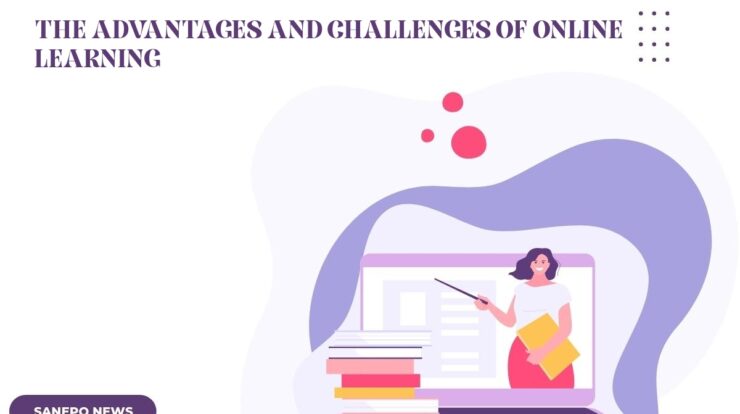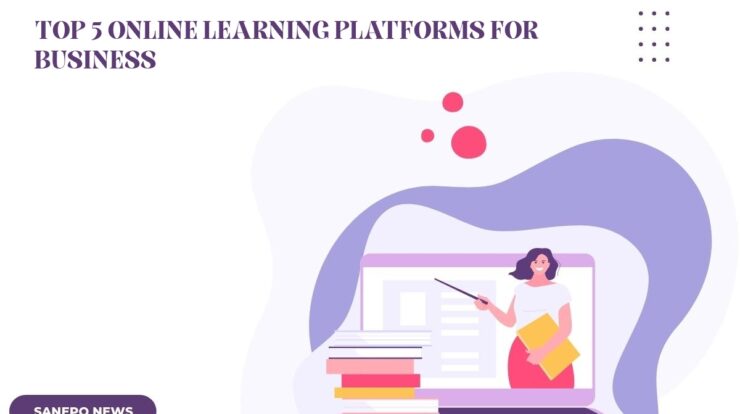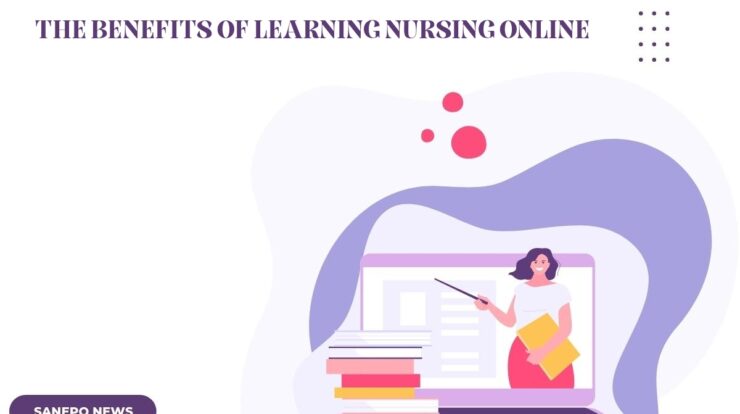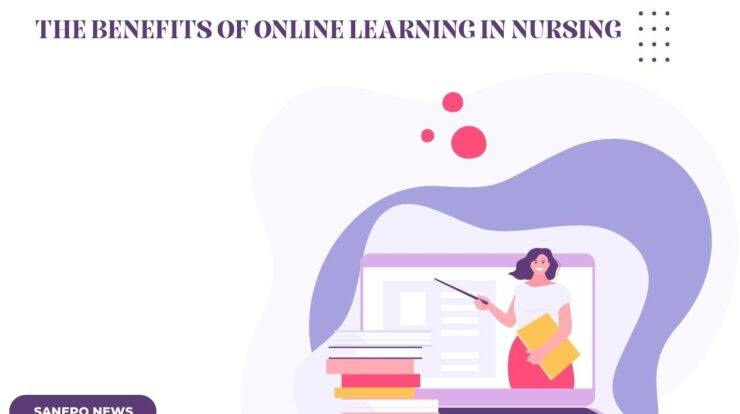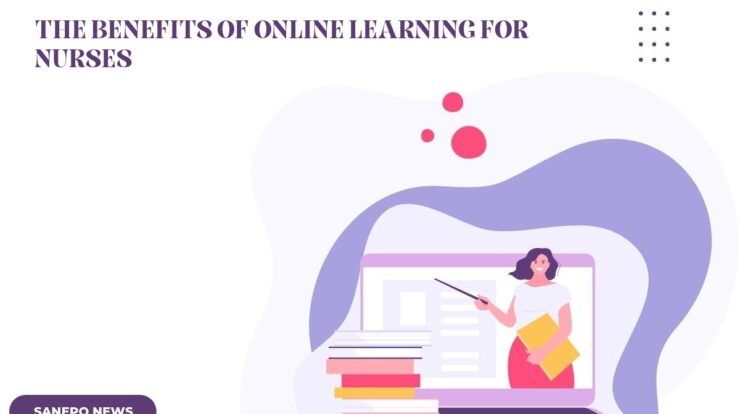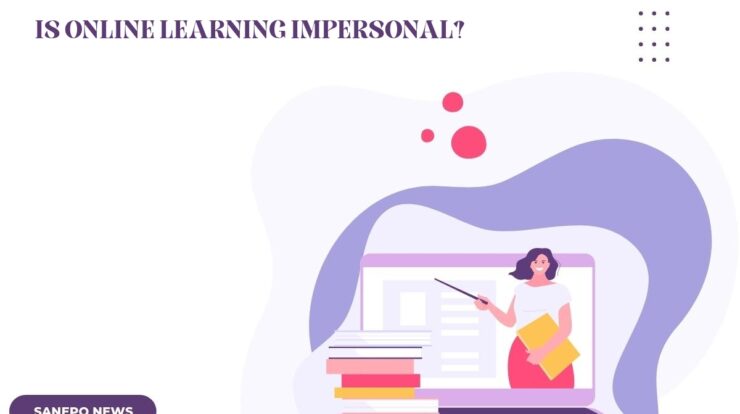
Hello there! Welcome to this thought-provoking article where we delve into the fascinating world of online learning. In the midst of the rapidly advancing digital age, the prevalence of virtual education has skyrocketed, offering learners the convenience and flexibility to acquire knowledge from the comfort of their own homes. However, as we eagerly embrace this modern revolution in education, a lingering question arises: is online learning impersonal? Today, we embark on a journey to explore the potential drawbacks and benefits of online learning, examining whether it truly lacks the personal touch of traditional face-to-face instruction. So, grab a cup of coffee, sit back, and let's unravel the intricacies of online education through a relaxed lens.
Is Online Learning Impersonal?
Lack of face-to-face interaction
One of the primary concerns surrounding online learning is the lack of face-to-face interaction that students typically experience in traditional classrooms. In a traditional classroom setting, students have the opportunity to engage in personal conversations, participate in group activities, and enjoy face-to-face discussions. Unfortunately, online learning often falls short in providing these types of personal interactions.
Without the physical presence of classmates and instructors, online learners may feel isolated and disconnected. They miss out on the benefits of immediate feedback, non-verbal cues, and the social dynamics that occur during in-person interactions. These elements play a significant role in establishing a sense of community and camaraderie in traditional classrooms, which can be difficult to replicate in an online learning environment.
Furthermore, the absence of face-to-face interaction in online learning can also hinder the development of essential social and communication skills. In traditional classrooms, students have ample opportunities to practice public speaking, engage in debates, and collaborate with their peers. These experiences not only enhance their knowledge but also enable them to sharpen their interpersonal skills.
While online learning platforms strive to incorporate discussion forums, video conferences, and other interactive tools to compensate for the lack of face-to-face interaction, they often fall short in capturing the essence of personal connections. Although these tools enable virtual communication, they do not fully replicate the interpersonal dynamics that arise in a physical classroom environment.
In addition to the absence of personal interaction, online learners may also struggle with feeling disconnected from their instructors. In traditional classrooms, students can approach their teachers directly to seek clarification, engage in one-on-one discussions, or receive individualized guidance. This direct access to instructors fosters a deeper connection and support system, which is often lacking in online learning.
Despite these challenges, it is important to note that online learning also has its advantages. It offers flexibility, convenience, and accessibility to a diverse range of learners who may not have the opportunity to attend traditional classrooms. Additionally, technology continues to advance, and online learning platforms are continually evolving to incorporate more interactive features to enhance the learning experience.
However, to address the issue of impersonality in online learning, educators and institutions must prioritize finding innovative ways to foster personal connections and create a sense of community among online learners. This may involve implementing virtual group projects, facilitating regular virtual discussions, or providing opportunities for students to connect outside of the virtual classroom.
In conclusion, while online learning provides numerous benefits, it often lacks the personal touch and direct interaction that students experience in traditional classrooms. The absence of face-to-face interaction can leave students feeling isolated and disconnected, hindering the development of social skills and limiting the support system available. As online learning continues to grow and evolve, it is crucial for educators and institutions to find creative ways to bridge the gap and create a more personal and engaging online learning experience.
Limited non-verbal cues and body language
In the realm of online learning, students are faced with the challenge of not having access to the full spectrum of non-verbal cues and body language that can significantly enhance communication and understanding. As a result, this absence of vital visual cues may lead to misunderstandings and a less personalized learning experience.
Non-verbal cues play a crucial role in face-to-face interactions. These cues include facial expressions, gestures, posture, and eye contact. They provide additional layers of context and emotional expression that facilitate effective communication. When engaging in online learning, these important cues are often lost, creating a barrier that can hinder the overall learning experience.
One notable example is the lack of facial expressions. In a traditional classroom setting, instructors and students can easily gauge each other's reactions through observing facial expressions. A frown, a smile, or a raised eyebrow can convey a wide range of emotions and intentions. Such visual cues help in comprehending complex concepts or topics. In stark contrast, online learning platforms often limit visual interactions to a small video screen, making it much harder to pick up on these subtle facial expressions.
Another non-verbal cue that is diminished in online learning is body language. Body language encompasses various movements and postures that communicate information and emotions. In a physical classroom, students can pick up on an instructor's body language to gauge their interest, enthusiasm, or confidence in the subject matter. Equally important, instructors rely on body language to assess student engagement and attentiveness. Unfortunately, in the absence of physical presence, students can miss out on these valuable cues, potentially leading to a more impersonal learning environment.
Moreover, eye contact plays a vital role in communication, signaling attentiveness, and establishing a connection between individuals. In an online learning setting, direct eye contact becomes virtually impossible, as participants must divert their gaze to the camera or other participants on the screen. Consequently, the connection and engagement that can be established through eye contact become diluted, introducing yet another layer of impersonality.
Online learning platforms attempt to mitigate the limitations of non-verbal cues and body language through various means. For instance, some platforms offer features like displaying participants' names when they speak, indicating who is actively engaged in the discussion. However, these solutions are not a perfect substitute for the richness and immediacy that non-verbal cues and body language provide in face-to-face interactions.
In conclusion, the impersonal nature of online learning can be attributed, in part, to the limited availability of non-verbal cues and body language. Facial expressions, gestures, posture, and eye contact all contribute to effective communication and a personalized learning experience. By recognizing these shortcomings, online learning platforms can strive to find innovative ways to incorporate non-verbal cues into the virtual classroom, fostering a more engaging and interactive environment for students.
Dependence on digital communication
One of the primary criticisms of online learning is its reliance on digital communication platforms. In an online course, students interact with their instructors and peers through chat rooms, discussion boards, and email. While these tools facilitate communication and allow for feedback and collaboration, they may lack the warmth and personal connection that is often associated with face-to-face interactions.
In a traditional classroom setting, students have the opportunity to engage in spontaneous conversations, ask questions directly, and form relationships with their classmates and teachers. These interpersonal interactions can foster a sense of community and support, which can enhance the overall learning experience. On the other hand, online learning may feel impersonal, as the interactions are often limited to text-based communication.
Without the physical presence and non-verbal cues of face-to-face interactions, students may miss out on important social cues, such as tone of voice and body language. This can lead to misinterpretations and misunderstandings in communication, making it more challenging for students to fully engage and connect with their instructors and peers.
However, it is important to note that while online learning may lack some of the personal elements of traditional classrooms, it also offers unique benefits and opportunities for personalization.
The Benefits of Personalization in Online Learning
Flexibility and individualized pace
One of the key advantages of online learning is the flexibility it offers. Students have the freedom to learn at their own pace and can access the course materials and resources at any time that is convenient for them. This individualized approach allows students to focus on areas that need improvement and spend more time on challenging topics.
In a traditional classroom, students often have to follow a set schedule and keep up with the pace of the entire class. This can be challenging for some learners who may require additional time or support. Online learning eliminates this constraint, providing a more personalized learning experience that caters to the specific needs and abilities of each student.
Furthermore, online learning platforms often utilize adaptive learning technologies, which use data and analytics to personalize the learning experience. These technologies track students' progress and identify areas of strengths and weaknesses, allowing instructors to provide personalized recommendations and resources. This targeted approach can enhance student engagement, motivation, and overall learning outcomes.
Moreover, online learning allows for greater flexibility in terms of accessing supplemental resources. Students can easily access additional materials, such as videos, articles, and interactive modules, to enhance their understanding of the subject matter. This freedom to explore and delve deeper into topics of interest can make the learning experience more engaging and meaningful.
In conclusion, while online learning may lack some of the personal connections and warmth of traditional classrooms, it offers unique benefits in terms of flexibility and personalization. By leveraging digital communication platforms and adaptive learning technologies, online learning can provide a tailored and individualized learning experience that caters to the specific needs and preferences of each student.
Access to diverse perspectives
In the realm of online learning, students are presented with a unique chance to engage with a wide range of individuals hailing from various backgrounds, cultures, and geographical locations. The mere accessibility to these diverse perspectives can prove to be an invaluable asset, contributing to the creation of a rich and fertile learning environment that is both engaging and profoundly personal.
One of the remarkable benefits of online learning platforms is the global reach they offer. Unlike traditional brick-and-mortar classrooms, online learning transcends geographical boundaries, enabling students from vastly different parts of the world to come together in a single virtual space. This unprecedented connection allows for a diversity of perspectives that could never be achieved within the confines of a localized classroom.
As students engage in discussions, exchange ideas, and share their unique experiences, they are exposed to an array of viewpoints that challenge their preconceived notions and broaden their horizons. The presence of individuals from different cultures and backgrounds fosters a sense of curiosity and encourages students to venture outside their comfort zones, pushing the boundaries of their understanding.
Promoting inclusivity and empathy
Online learning provides a platform for students to interact with individuals who may have vastly different life experiences and perspectives from their own. This exposure to diversity not only enriches discussions but also fosters inclusivity and empathy among learners.
When students encounter viewpoints that contradict their own, they are presented with an opportunity to critically evaluate their beliefs and challenge any biases they may hold. This process of introspection and reflection encourages personal growth and the development of empathy – the ability to understand and share the feelings of others.
Moreover, the virtual nature of online learning allows students to communicate without the visual cues and biases that may exist in face-to-face interactions. This level playing field promotes a more inclusive environment, where everyone's ideas and perspectives can be heard and valued. By actively listening to and appreciating diverse viewpoints, students cultivate a sense of empathy and understanding, contributing to a truly personalized learning experience.
Expanding cultural awareness
Online learning transcends borders, enabling students to connect with individuals from different cultures and backgrounds. This exposure not only broadens their understanding of the world but also enhances their cultural awareness and sensitivity.
Through engaging with classmates who hail from different countries, students are exposed to a myriad of customs, traditions, and belief systems. This firsthand exposure helps break down barriers and dispels stereotypes, fostering a deeper appreciation and respect for diverse cultures.
The diverse perspectives shared in online discussions provide students with an opportunity to learn from each other's unique experiences and cultural contexts. This exchange enhances their cultural competency, which is becoming increasingly important in our interconnected global society.
Overall, online learning offers students unprecedented access to a vast array of perspectives from individuals across the globe. This exposure promotes inclusivity, empathy, and cultural awareness – elements that contribute to a highly personal and enriching learning environment. As the world becomes increasingly interconnected, the ability to engage with diverse perspectives and navigate cultural differences is a crucial skill that online learning nurtures and cultivates.
Supportive online communities
One of the misconceptions about online learning is that it is impersonal and isolating. However, many online learning platforms actually foster vibrant and supportive communities where students can connect, collaborate, and support each other. These communities can create a sense of belonging and personal connection that enhances the overall learning experience.
Strategies to Foster Personal Connection in Online Learning
Utilizing video conferencing tools
Incorporating video conferencing tools into the online learning experience can provide a more personal and engaging environment. By allowing students and instructors to see each other in real-time, it bridges the gap between traditional face-to-face interaction and online learning. This visual connection adds a human touch and helps to create a sense of presence and connection among participants.
During live video conferences, students have the opportunity to interact with their classmates and instructors just as they would in a physical classroom. They can ask questions, participate in discussions, and engage in collaborative activities. Seeing the facial expressions and body language of their peers and instructors adds another layer of communication, making the learning experience more dynamic and personal.
Additionally, video conferencing tools can facilitate virtual office hours, where students can schedule one-on-one sessions with their instructors. This provides an opportunity for personalized support and guidance, similar to the experience of visiting a professor during their office hours on a college campus. Through video conferencing, instructors can address individual concerns, clarify concepts, and provide personalized feedback, fostering a sense of connection and support for each student.
Interactive discussion boards and forums
Online learning platforms often provide interactive discussion boards and forums where students can actively engage with their peers and instructors. These platforms serve as virtual spaces for discussions, debates, and information sharing.
Through these discussion boards, students can ask questions, share their insights, and receive feedback from their peers and instructors. This exchange of ideas not only enhances the learning process but also promotes a sense of community and personal connection. Students can learn from each other's perspectives, challenge their own assumptions, and broaden their understanding of the subject matter.
Instructors can also use these platforms to facilitate discussions and provide guidance. By actively participating in the discussions, instructors can offer additional insights, clarify misconceptions, and encourage critical thinking. This level of interaction helps to foster a stronger sense of connection and engagement among the participants.
Collaborative projects and group work
Collaborative projects and group work are commonly used in online learning settings to promote active learning, problem-solving, and teamwork. These activities not only enhance the learning experience but also facilitate personal connection and collaboration among students.
Through collaborative projects, students have the opportunity to work together towards a common goal, leveraging each other's strengths and expertise. They can communicate through online platforms, share ideas, assign tasks, and provide feedback to one another. These collaborative interactions promote a sense of camaraderie and teamwork, fostering personal connections and a supportive learning environment.
Technology has made it easier than ever for students to collaborate remotely, regardless of their geographical locations. Online tools such as shared documents, group chats, and virtual whiteboards enable seamless collaboration and help students build personal connections with their peers.
Engaging multimedia and interactive content
Online learning platforms often offer a wide range of multimedia and interactive content to enhance the learning experience. This content includes videos, simulations, interactive quizzes, and gamified activities.
Engaging multimedia not only captures students' attention but also creates a more personal and interactive learning environment. Videos, for example, allow students to see and hear their instructors, making the learning experience more relatable and dynamic. Simulations and interactive quizzes provide hands-on experiences and opportunities for immediate feedback, which contribute to a more engaging and personalized learning process.
Interactive content also allows students to explore concepts at their own pace and in their preferred learning style. This personalized approach helps to build a stronger connection between the student and the course materials, enhancing the feeling of personalization in online learning.
Peer-to-peer mentoring and support
Online learning platforms can also facilitate peer-to-peer mentoring and support systems, which contribute to a sense of connection and personalization. Through these systems, experienced or more advanced students can mentor and support their peers who may be struggling or need additional guidance.
Peer mentoring provides an additional layer of support and encouragement, as students can relate to and learn from their peers' experiences. This mentorship can take place through online messaging systems, discussion boards, or even virtual study groups. Establishing these connections promotes a sense of community and personal connection, fostering a supportive learning environment.
In conclusion, online learning may initially seem impersonal, but with the right strategies and tools, it can provide a rich and engaging learning experience that fosters personal connection and community. Utilizing video conferencing tools, interactive discussion boards, collaborative projects, engaging multimedia, and peer-to-peer mentoring can bridge the gap between traditional classroom interactions and online learning, creating a supportive and personalized learning environment for students.
Encouraging active participation and engagement
To combat the perception that online learning is impersonal, educators have implemented various strategies to encourage active participation and engagement among students. Through fostering discussions and interactive activities, instructors strive to create an environment that promotes personal connection and involvement.
One effective method is the use of online forums or discussion boards, where students can actively participate in class discussions. These platforms allow students to express their thoughts, share ideas, and engage in meaningful conversations with their peers. Instructors can guide and moderate these discussions, leading to a more interactive and personalized learning experience.
Furthermore, instructors can incorporate multimedia content and interactive tools to enhance engagement. Through the use of videos, podcasts, virtual simulations, and interactive presentations, students can actively interact with the course material and gain a deeper understanding of the concepts. This hands-on approach fosters a sense of personal connection with the content and facilitates active learning.
Another approach to encourage participation is through collaborative projects or group assignments. By dividing students into smaller teams, instructors promote teamwork and collaboration, making the online learning experience more interactive and sociable. Through virtual group discussions, shared document editing, and video conferencing, students can work together towards a common goal, fostering personal connections and a sense of belonging within the online learning community.
Additionally, instructors can provide regular opportunities for students to engage with the course material and their peers through interactive quizzes, polls, and surveys. These activities not only encourage active participation but also provide instructors with valuable feedback on the effectiveness of their teaching methods. By incorporating students' perspectives and suggestions into the learning process, instructors can tailor the online learning experience to meet the individual needs of their students, promoting a sense of personalization.
Moreover, instructors can employ the use of social media platforms or online discussion groups to facilitate informal interactions outside of the structured learning environment. These platforms provide avenues for students to connect with their peers, ask questions, and share resources. By creating a sense of community and fostering relationships, these informal interactions contribute to a more personal and engaging online learning experience.
It is important to note that while online learning may lack face-to-face interactions, it provides opportunities for personalized and meaningful engagement through the effective implementation of various interactive strategies. By encouraging active participation, fostering discussions, incorporating multimedia content, facilitating collaboration, and utilizing social media platforms, instructors can bridge the gap between the virtual classroom and personal connection, creating an online learning experience that is both engaging and personable.
Providing timely and personalized feedback
Offering timely and personalized feedback to students is an essential aspect of online learning. While some may argue that online learning is impersonal due to the lack of face-to-face interaction, the provision of personalized feedback helps bridge this gap and establish a connection between instructors and learners. This feedback not only acknowledges the individual growth and progress of students but also enhances the overall personalized aspect of online learning.
The Future of Personalization in Online Learning
Advancements in artificial intelligence
As technology continues to advance, the integration of artificial intelligence (AI) into online learning holds great potential to further personalize the learning experience. AI algorithms are capable of collecting and analyzing vast amounts of student data, enabling them to provide personalized recommendations and feedback in real-time. This not only enhances the learning process but also strengthens the bond between instructors and learners.
One of the main advantages of utilizing AI in online learning is its ability to adapt and tailor the educational content to meet the specific needs and preferences of individual students. By analyzing student performance data, AI algorithms can identify areas where students may need additional support or where they have demonstrated proficiency. This allows instructors to provide targeted feedback and create customized learning paths that cater to each student's unique requirements.
Furthermore, AI can assist in automating routine tasks such as grading and assessment. This helps instructors save time and focus on providing more meaningful feedback to students. With AI's ability to quickly process and analyze large volumes of data, feedback can be provided promptly, ensuring that students receive the guidance they need in a timely manner.
Another exciting application of AI in online learning is the use of chatbots. These virtual assistants can engage in real-time conversations with students, answering their questions and providing guidance whenever needed. Chatbots equipped with natural language processing capabilities can understand and respond to students' queries, delivering personalized responses and recommendations. This not only enhances the learning experience but also simulates human interaction, making online learning feel less impersonal.
It is worth noting that while AI holds great promise for personalizing online learning, it should not replace human interaction entirely. The importance of human instructors cannot be undermined, as they bring valuable expertise, experience, and empathy to the learning process. Instead, AI should be seen as a tool that complements and enhances the role of human instructors, allowing for a more personalized and efficient learning experience.
In conclusion, online learning can be personalized through the provision of timely and personalized feedback. Advancements in artificial intelligence have the potential to further enhance this personalization by analyzing student data, providing tailored recommendations, automating routine tasks, and utilizing chatbots for real-time interaction. While AI can undoubtedly play a significant role in personalizing the learning experience, the involvement of human instructors remains crucial in creating a balanced and effective online learning environment.
Integration of virtual reality and augmented reality
The integration of virtual reality (VR) and augmented reality (AR) technologies has the potential to revolutionize online learning by creating immersive and interactive learning experiences. These technologies can make online learning more personal and engaging, allowing students to feel as if they are present in a physical classroom and enhancing the personal connection between the instructor and the learner.
Virtual reality refers to a computer-generated simulation of a three-dimensional environment that can be interacted with using special electronic equipment, such as a headset. Augmented reality, on the other hand, involves overlaying digital content onto the real world, enhancing what we see and feel. These technologies have gained popularity in various industries, including entertainment, gaming, and now education.
By integrating VR and AR into online learning platforms, students can have a more immersive and engaging educational experience. For example, in a VR classroom, students can interact with virtual objects and environments, allowing for a hands-on learning experience. They can explore historical sites, conduct virtual science experiments, or even simulate real-life scenarios, such as medical procedures, all from the comfort of their own homes.
This level of interactivity and immersion helps to bridge the gap between traditional face-to-face learning and online learning, making the latter feel less impersonal. Instead of simply watching videos or reading text-based content, students can actively participate in their learning process, resulting in a deeper understanding of the subject matter.
Moreover, VR and AR technologies offer the opportunity for collaboration and social interaction, further enhancing the personal connection among students and instructors. Students can engage in virtual group activities, discussions, or even role-playing exercises, allowing for a more dynamic and interactive learning environment.
Not only can VR and AR make online learning more personal, but they can also cater to different learning styles and preferences. Visual learners, for instance, can benefit from the visual and interactive nature of these technologies, while auditory learners can still receive audio feedback and instructions. By appealing to different learning styles, VR and AR ensure that students are provided with a personalized learning experience.
It is important to note that VR and AR technologies are still relatively new in the field of education, and their integration into online learning platforms is a developing area. There are challenges to overcome, such as the cost of equipment and accessibility issues. However, as these technologies continue to advance and become more affordable, their potential to enhance online learning and make it more personal cannot be overlooked.
In conclusion, the integration of virtual reality and augmented reality technologies holds great promise in making online learning more personal and engaging. These technologies provide a level of immersion, interactivity, and collaboration that helps bridge the gap between traditional face-to-face learning and online learning. By appealing to different learning styles and preferences, VR and AR ensure a personalized learning experience for students. While challenges exist, the potential benefits of integrating VR and AR into online learning platforms make them a worthwhile endeavor in enhancing the quality and personal connection within virtual classrooms.
Continuous improvement based on user feedback
As online learning platforms continue to evolve, one of the key elements in shaping a personalized learning experience is continuous improvement based on user feedback. By actively listening to students' needs and preferences, these platforms can adapt and enhance their features, ultimately offering a more personalized and less impersonal online learning experience.
One of the advantages of online learning is the ability to collect meaningful data on students' behavior and engagement. This data provides valuable insights into how students interact with the platform, what features they find useful, and areas where improvements can be made. By analyzing this feedback, online learning platforms can identify patterns and trends that contribute to a more personalized learning experience.
Online learning platforms are embracing user feedback channels to gather insights and understand students' needs better. These platforms often use surveys, feedback forms, and online forums to collect students' opinions and suggestions. By actively seeking feedback, platforms can gain a deeper understanding of students' experiences and identify areas for improvement.
Additionally, online learning platforms often encourage students to provide feedback on specific learning materials, courses, or instructors. This feedback helps platforms evaluate the effectiveness of their content and make necessary adjustments. It also enables them to cater to students' preferences and offer a more personalized learning journey.
Furthermore, user feedback plays a crucial role in identifying technical glitches and bugs in online learning platforms. Students may encounter issues such as difficulty accessing certain features or experiencing lag during live classes. By promptly addressing these technical concerns based on user feedback, platforms can ensure a smoother and more efficient learning experience for students.
Online learning platforms also leverage user feedback to fine-tune their recommendation algorithms. These algorithms analyze students' learning patterns, preferences, and goals to suggest relevant courses, materials, or resources. By incorporating user feedback into the algorithm, platforms can refine the recommendations to better cater to each student's individual learning needs.
Continuous improvement based on user feedback is a dynamic process. Online learning platforms actively iterate and update their features based on the insights gained from user feedback. This constant evolution ensures that the platform is continuously working towards addressing students' needs and preferences, making the online learning experience more personal and less impersonal.
In conclusion, online learning platforms recognize the importance of user feedback in creating a more personalized learning experience. By actively listening to students' needs and preferences, these platforms can continuously improve and adapt their features. User feedback helps in identifying areas for enhancement, evaluating content effectiveness, addressing technical issues, and refining recommendation algorithms. Through this continuous improvement, online learning platforms strive to offer a more personalized and engaging learning experience for students.


